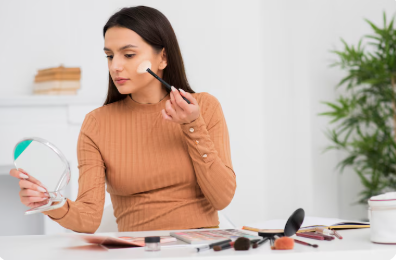A good concealer can be your best friend on busy mornings, saving the day by covering blemishes, dark circles, and uneven patches. But despite its potential, this essential item is often misunderstood or misused—even by seasoned makeup lovers. If your concealer seems cakey, creased, or simply doesn’t perform as expected, you might be making one or more common mistakes.
While concealer is an everyday staple in many makeup kits, using it correctly can make all the difference between a flawless finish and a makeup mishap. Below, we’ve listed the most common concealer mistakes people make, along with practical tips to fix them.
1. Choosing the Wrong Shade
Picking the incorrect concealer shade is one of the most frequent errors. Many people opt for a concealer that’s too light for under the eyes or too dark for spot concealing.
Fix it: Use a shade that is just one or two tones lighter than your foundation for under-eye areas. For covering blemishes or redness, a concealer that matches your foundation is ideal. Always test the product in natural light to make the right choice.
2. Applying Too Much Product
It’s easy to think more product equals more coverage, but with concealer, less is often more. Over-applying can lead to creasing, caking, or product settling into fine lines.
Fix it: Start with a small amount and blend thoroughly. Use a sponge or your fingertip to press the product into the skin gently. Build up coverage only if necessary.
3. Using the Wrong Formula
Not all concealers are created equal. Choosing the wrong formula for your skin type or concern can make things worse instead of better.
Fix it: For dry skin, opt for a hydrating or creamy concealer. If you have oily or acne-prone skin, choose a matte or long-wear formula. Match your concealer type to the area you’re targeting—hydrating for under-eyes, and high coverage for blemishes.
4. Forgetting to Set Your Concealer
Even the best concealer won’t last all day if it isn’t set properly. Skipping this step often leads to creasing or fading, especially under the eyes.
Fix it: Lightly dust a translucent powder over the concealed areas using a fluffy brush. Be careful not to over-powder, which can make the skin look dry or textured.
5. Applying Before Foundation
Another common mistake is applying concealer before your foundation. This often leads to wiping off product or disrupting the coverage.
Fix it: Apply your foundation first, then use concealer to target areas that still need extra attention. This way, you’ll use less product and get a more natural-looking finish.
6. Not Using a Colour Corrector When Needed
Sometimes, concealer alone isn’t enough—especially for intense dark circles or hyperpigmentation. Applying only concealer in such cases can make the area look grey or ashy.
Fix it: Use a colour corrector underneath your concealer. Peach or orange tones help neutralise dark circles, while green correctors can reduce redness. Layer your concealer on top for an even tone.
7. Ignoring the Right Tools
Blending makes all the difference, and using the wrong tools can leave your concealer streaky or patchy.
Fix it: Use a damp beauty sponge, flat concealer brush, or even clean fingers to blend the product into the skin. Many high-quality makeup kits include brushes or tools that are specifically designed for concealer application.
8. Not Updating Products Regularly
Old or expired makeup products lose their effectiveness and can even irritate the skin. If your concealer has changed in smell, texture, or performance, it’s probably time for a replacement.
Fix it: Always check the expiry dates on your products. Replace concealer every 6–12 months, especially if used frequently.
Final Thoughts
Concealer is a game-changing product, but only when used correctly. By avoiding these common mistakes and making small adjustments to your routine, you can enhance your natural features and achieve a smooth, flawless finish. A little knowledge, the right tools, and fresh makeup products can go a long way in helping you master the art of concealing.


156 comments
I love how this post highlights comfort and durability for any outdoor occasion, especially when you’re looking for dependable footwear that keeps you steady and stylish throughout your day memorial day golf shoes.
Interesting post with thoughtful insights; I appreciate the balanced perspective and practical tips offered, which make complex topics feel more approachable for readers new to the subject ketamine for sale.
I love how this post captures versatile outerwear for all seasons, mixing comfort with style. It’s great to see thoughtful fabrics and practical details that elevate everyday outfits without breaking the bank women’s jackets nz.
Great post—thanks for sharing practical tips and a friendly perspective. It’s refreshing to see guidance that blends practical care with sensible expectations, and it motivates me to plan carefully for future moves Pool table moving service Fort Collins.
I found this post really insightful and easy to relate to, offering practical tips that help simplify choosing finishes, protections, and long-lasting coatings for varied projects without the jargon Industrial Paints Supplier UAE.
I really appreciate the practical insights shared here, especially how durable storage options can simplify busy workspaces and keep everything organized without fuss or excess clutter in daily routines salsbury industries lockers.